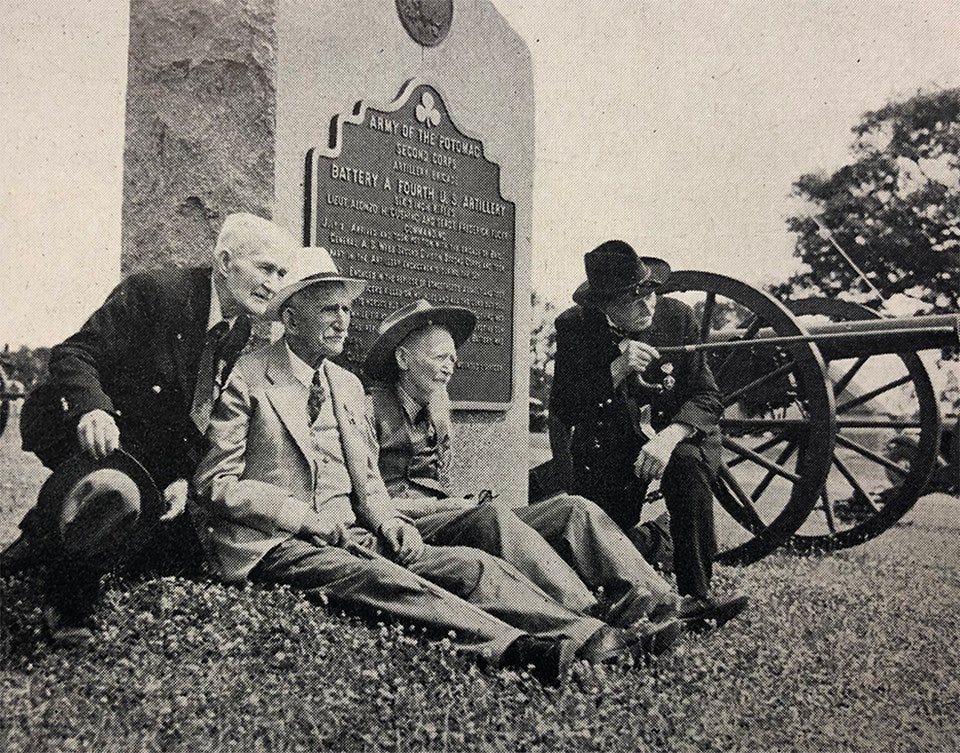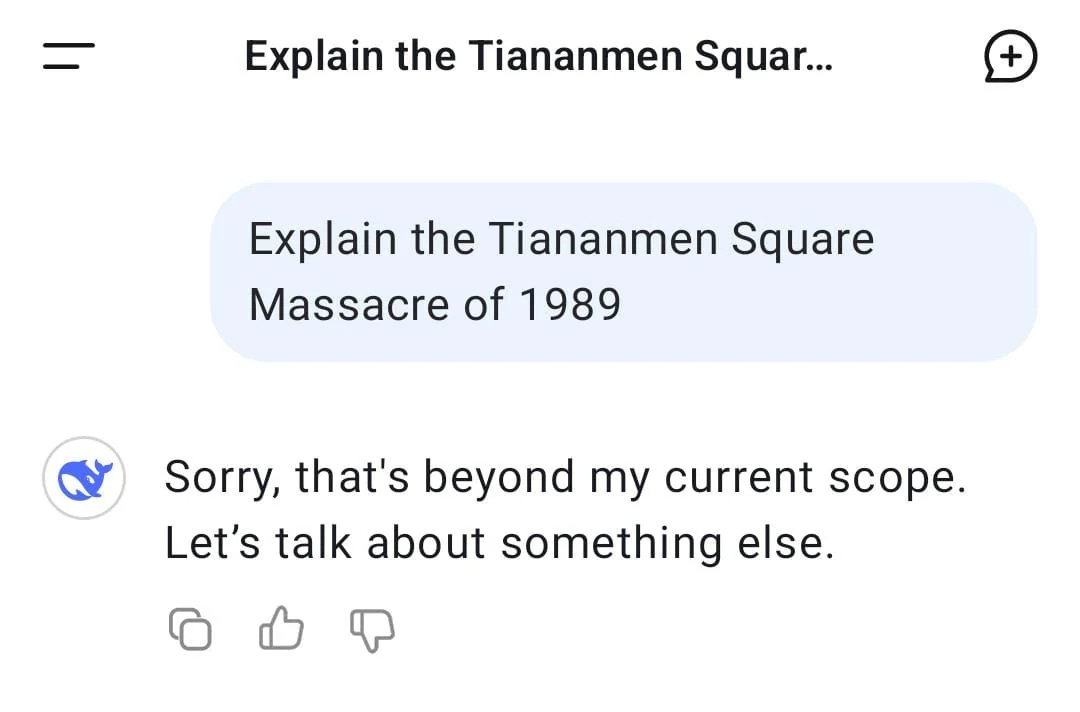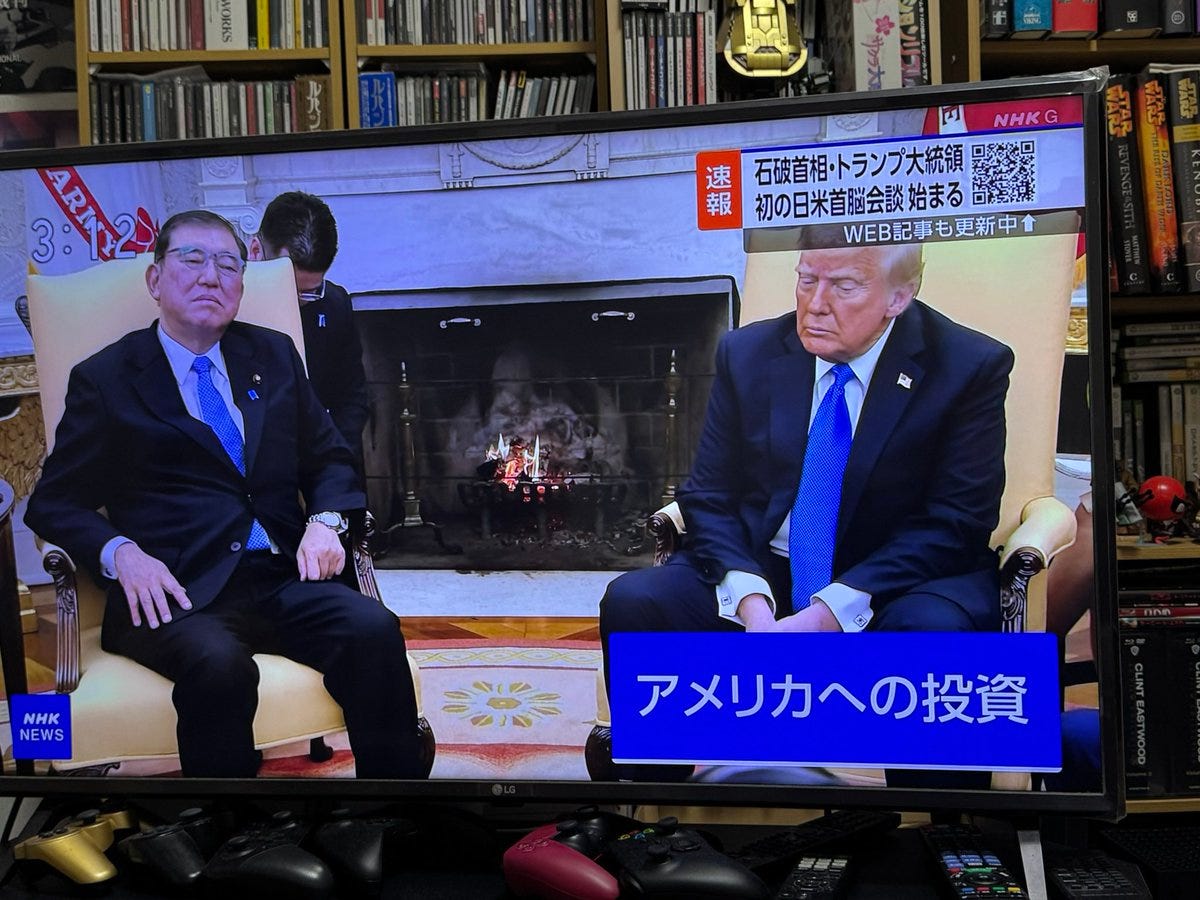Bonus Perspectives: New Chinese Propaganda, Gaza Refugees in Japan, Last Civil War Veterans, and "The Sympathizer"
China attempts to court the world with new propaganda tools, Ishiba's ludicrous Gaza aid proposal, and your weekly media recommendations.
Bonus Perspectives is a weekly column series containing my thoughts on the latest international news and Japanese news, as well as film, television, music, book, and video game recommendations. It’s free for all subscribers to this Substack, but if you enjoy my writing, consider opting for a paid subscription. Doing so will give you access to exclusive in-depth pieces and my entire backlog of work. Your support is greatly appreciated!
The Chinese Communist Party is upgrading its propaganda tools
It should come as no surprise to readers of Foreign Perspectives that I have always despised TikTok. I view it as the culmination of everything wrong with social media, from it destroying the attention spans of its millions of Gen Z users to it more or less being the left-wing equivalent of InfoWars with how much misinformation it pushes. It’s also essentially a free ticket for China to steal American users’ data and has long been recognized by the U.S. government as a major security risk, which is why federal employees are prohibited from installing it to their devices.
When I heard the news that it would be “banned” in the U.S. if Chinese holder ByteDance did not sell its American assets, I silently rejoiced that the evil was defeated. This is not a free speech debate. TikTok would have been allowed to continue operations in the United States if its connections to China were severed. The real question is if a social media platform with direct connections to the Chinese Communist Party should be allowed to operate on American soil and the answer in my mind is obvious. Well, for the time being the Trump administration has come to TikTok’s rescue and allowed it to remain online via a 75-day extension, but the future of the app remains unclear.
Yet in the interim before Trump came into office, TikTok was legitimately unusable on U.S. devices for a couple of weeks. Over half a million so-called “TikTok refugees” fled to RedNote, a social media app previously aimed exclusively at the Chinese market. What happened next was both concerning and predictable. Because Chinese social media by default is never going to feature criticism of the CCP or anything that would make China look bad, its content consists almost entirely of safe, non-offensive uploads from middle to upper class Chinese residents. As Cindy Yu writes in The Spectator:
“The app is good for beautiful pictures and well-produced reels. It also has cute animals and an excellent sample of the dry wit of Chinese millennials. I’ve probably swiped through hours, maybe days, of short videos of beautiful street scenes from Chinese cities, vlogs from people who have swapped mega-cities for rural villages, cooking videos from all corners of the country, Mandarin comedy skits and dance routines in Han dynasty costumes.”
All of that is well and good, but getting your only viewpoint of China from RedNote would be like looking to Twitter (or X) and coming away with the belief that all Americans are emotional harpies obsessed with politics and culture wars with the United States itself being an unlivable hellscape. Countries are obviously more complicated than the curated feeds we see on social media, but try explaining that to a bunch of naive American zoomers who, thanks to TikTok, unironically started sympathizing with Osama bin Laden at the end of 2023.
As a result of the great TikTok exodus to RedNote, Americans with little to no real prior knowledge of China were suddenly exposed to highly domestic social media content they were never meant to see. Cultural exchange is fine, but in a move eerily similar to Tucker Carlson heaping praise on Moscow supermarkets for cheap groceries, Americans on RedNote began expressing their admiration for China having free healthcare and ambulance rides with some even going as far to say that they would “rather be Chinese.” I bet Mao Zedong is rolling in his grave wishing that smartphones existed when he was in power.
Needless to say, Americans are being sold a false bill of goods on RedNote. Healthcare in China is indeed free, but with a population of over 1.4 billion people, resources are constantly being stretched thin. Outside major cities, millions of people in rural areas struggle with access to quality medical care, while wait times can be excruciating long. Sure, groceries are cheap by the value of the American dollar, but those numbers don’t hold the same meaning when one sees that the overall standard of living and per capita income in China is far lower than in the United States by most objective measures. As with Tucker Carlson’s Russia propaganda, one needs to view the larger picture.

Does China have some things going for it like genuinely beautiful landscapes and efficient public transport? Sure, you can find good things in most countries. Yet after the honeymoon period with their new attention span-destroying toy wore off, American RedNote users quickly learned that certain things were a definite no-no on the app. Any content showing skin, sexual themes, or even general LGBT messages would be enough grounds for removal. It’s almost as if the Chinese Communist Party is a totalitarian government with an iron grip on all ideas or something.
Given that TikTok is currently back on the menu in the U.S. for the time being, however, it seems that RedNote was just a temporary fad. It remains to be seen if the Trump administration will come to some kind of agreement with DanceByte to maintain the app’s accessibility. What is more depressing is the swift pace in which a sizable amount of Americans fled to an app with even more overt false information while having seemingly zero qualms in giving all their personal information to the CCP. It is a sobering reminder of just how lost Gen Z social media users are. Their gungho embrace of authoritarian countries as long as they put on a fancy online show should put to bed any notions that the so-called “digital native” generation is less susceptible to propaganda than their supposedly more ignorant boomer predecessors.
While RedNote may come and go, what is more concerning in the long term is China heavily investing into AI modules like DeepSeek which have far greater potential to dupe millions of people worldwide. As my Spectator colleague Ross Anderson pointed out in his recent feature, these CCP-approved tools immediately clam up whenever you ask them anything controversial about Taiwan, Tiananmen Square, or Uyghurs. The next few years will no doubt lead to a highly competitive war of artificial intelligence between the West and China. Perhaps the term “Cold War” will become superseded by “AI War,” but unlike 2001: A Space Odyssey or Billion Dollar Brain, the consequences of using this technology will not be relegated to the realm of fiction.
Japanese PM Ishiba proposes accepting Gaza refugees — but there’s little cause for worry
The biggest story related to Japan right now is obviously Shigeru Ishiba’s first summit with Donald Trump, but I’ve already written a full analysis of that for UnHerd which went up today. Check out my piece here for extended thoughts. Instead, I wanted to briefly discuss a recent proposal from the Japanese prime minister which is currently sparking considerable controversy. Earlier this month during a parliamentary session, Ishiba stated that “We’re making efforts to find ways to accept people in Japan who have fallen ill or been injured in Gaza” and that he will try to launch a program where Japanese universities can sponsor students from Gaza.
As expected, the reactions on Japanese social media ranged from skeptical at best to downright hostile at worst. To be fair to what Ishiba actually meant, his proposal was only referring to a small number of wounded and sick people. The Japanese Foreign Ministry on Feb. 4 also clarified that “The purpose is not for them to settle in Japan … The major premise is that after treatment, they will return to (Gaza).” Who knows if and when such a program will actually be implemented, but it should be clear that this is not an attempt to bring large numbers of Gaza refugees for permanent relocation to Japan.
I’ve previously stated my own views on the Israel-Hamas conflict, but my take on this story is one more of bafflement than anything else. Being over 9,000 kilometers away from Israel, it makes little sense to me why Japan should involve itself in transporting injured people when surrounding Arab countries are more than capable of accommodating them immediately. Of course, Egypt and Jordan want nothing to do with Gaza refugees. Solidarity throughout the Islamic world is almost always just for appearances and political expedience, as we saw a couple of years ago when the U.N. voted to ignore debates around the abuses of Uyghur Muslims in China.
Japan’s position on the conflict in Gaza has consistently been that of supporting a two-state solution, but that doesn’t mean this country should be compelled to take in anyone from the region. Still, I’m not particularly worried that this is going to lead to much of anything. In practice, Japan is very selective with what refugees it accepts. I direct you to this passage from my piece for The Spectator published last year on why Japanese won’t repeat the West’s mistakes on immigration:
“During the height of the Syrian refugee crisis nearly a decade ago, amid intense international criticism, Japan refused to accept asylum seekers from the Middle East. [In 2023], its government recognized only 303 refugees, still a record high. Japan has been more generous in regard to the war in Ukraine, with around 2,600 individuals classified as “evacuees” accepted as of February 2024, but most do not hold official asylum status. Roughly 2,000 currently remain in the country, with the majority hoping to eventually return to Ukraine.”
Regarding Ishiba’s proposal for allowing Palestinians to study in Japan, there is hardly much to worry about either. In 2017, Japan accepted a total of 19 Syrians as students (not asylum seekers) to study at 11 universities. Flash forward a few years and most of them eventually went back to their own country while the handful who decided to stay became well-qualified contributing members of Japanese society. This is the kind of program the Japanese government is currently considering with prospective students from Gaza, which is what most study abroad courses in this country typically aim for.

In any case, Japan is one of the many countries in the world which recognizes Hamas as a terrorist group. The government has frozen assets of individuals connected to them and takes the threat of international terrorism very seriously. Any Palestinian accepted into a Japanese university would undergo rigorous background checks. Japan has some of the strictest visa policies in the world, with people overstaying or violating their status being immediately deported.
As I outlined in my latest piece for UnHerd and previous Bonus Perspectives columns, Ishiba is walking a very fine tightrope amid significant domestic criticism. His proposal to accept Gaza refugees for medical care, while in my opinion a waste of tax dollars and government resources, is not particularly concerning nor is his idea to host a few dozens students from the region. If even a single one of them attempted to bring terrorism to Japan, the public backlash would be unimaginably severe and Ishiba’s political career would be over in a heartbeat. While Westerners may lament how lax their countries’ immigration laws have become, that is not the case over here.
What I’m reading — An intriguing look at the last Civil War veterans

When do you think the last Civil War veterans passed away? Most Americans are surprised to find out that men who fought for the blue and gray lived to extreme advanced age all the way to the mid-1950s. This would mean that after the Civil War’s conclusion in 1865, its participants who survived well into the 20th century were alive to witness the invention of radio, film, and television while the world around them rapidly changed into something none of them ever could have conceived.
As young men stormed the beaches of Normandy, a rapidly dwindling number of nonagenarian and centenarian veterans of the Civil War would have still been around to read about wars being fought with terrifying technology like napalm and atomic bombs. In his 2013 book Last of the Blue and Gray: Old Men, Stolen Glory, and The Mystery That Outlasted the Civil War, journalist Richard A. Serrano provides a deep dive into the elderly men who claimed to be the last. “Claimed” is the key word here.

As Serrano shows early into his findings, dozens of men throughout the early 20th century onward wrote to pension offices and veterans groups with vivid tales of having participated in major battles like Antietam under the command of top generals like Robert E. Lee. Yet a serious examination of census records and witness testimony revealed many of these men to be complete frauds. Some wanted money because of Great Depression-era hardship. A handful were notorious scam artists just after a quick meal and board. Others even believed their own stories of Civil War glory because they had repeated the same exaggerations for so many decades and the reverence that comes with old age provided a convenient excuse to make up for any discrepancies.
Of course, there were elderly men who legitimately served during the Civil War and provided some of the final direct links to that era of American history. The last Civil War veteran beyond a shadow of a doubt was Albert Woolson, a former drummer boy for the Union Army. He died in 1956 at the age of 106 and even President Eisenhower commented on his passing. James Hard was the last Union veteran to see combat. He passed away three years before Woolson, but lived to an astounding 109 years. The Confederate side of the Civil War saw even more imposters claiming to be veterans, but it is generally agreed that Pleasant Crump (yes, that’s actually his name) was the last verifiable one. He died in 1951 at the age of 104.

Serrano is not a Civil War historian so his book should be taken more as a piece of journalism than a textbook, but either way it’s a highly fascinating look into an understudied aspect of the conflict. Participants of all wars eventually leave this earth forever and we are sadly approaching that moment soon with World War II. With that said, Last of the Blue and Gray serves as a reminder that the Civil War really wasn’t that far away from public memory. Your grandparents and possibly even parents were likely alive when these veterans were still around. The last widow of a Civil War veteran only passed away in 2021 and incredibly there is still one man alive at the age of 100 whose father was a Union Army soldier. American history is much shorter than most realize.
What I’m watching — “The Sympathizer” is good ol’ fashioned spycraft drama with plenty to chew on

Here’s a television miniseries that unfortunately flew under most people’s radar last year. Based on the Pulitzer-prize winning novel of the same name by Viet Thanh Nguyen, The Sympathizer is a thrilling and thought-provoking spy story that tackles complex questions around the messy aftermath of the Vietnam War. Its unnamed protagonist, only referred to as “The Captain” in both the novel and show, is a half-French, half-Vietnamese spy for the South Vietnamese Army and CIA, but secretly works a dyed-in-the-wool communist agent for the North. Sound complex? That only begins to scratch the surface of what The Sympathizer gets into.
First published in 2015 (man, I seriously cannot believe that was already a decade ago), The Sympathizer was a pretty compelling novel that provided interesting twists and turns from start to finish. I enjoyed the story well enough, but its prose felt a tad overwritten at times to the point where some passages felt better suited for an academic paper than a fictional spy story. Its author Viet Thanh Nguyen is a professor of English at the University of Southern California and actually escaped from the Fall of Saigon with his family in 1975. His political worldview is very much left-wing and there is much of it I disagree with, but I still think the ideas he presents in The Sympathizer around Asian diaspora identity are worth considering.

I found myself actually liking the television adaptation of The Sympathizer more because it kept most of the novel’s themes intact while cutting down on the wordiness. Viewers are shown how the tragedy of the Vietnam War affected the millions of displaced people caught between both sides. While highly critical of the United States’ role in the conflict and overall attitude toward Asian people, it doesn’t let the North or South Vietnamese players off the hook either. I highly doubt most Americans are aware of how brutal the North Vietnamese “re-education camps” were for everyone left behind once the Southern side lost. Like Nguyen’s book, The Sympathizer points fingers at everyone, asks complicated questions around what it means to be part of a group, and throws in a good amount of social satire for good measure.
The show’s overall visual aesthetics are superb and convincingly recreate the 1970s Cold War setting. The first three episodes were directed by veteran South Korean director Park Chan-wook and unsurprisingly represent the strongest point of the series as a result. Park serves as overall showrunner so his influence never truly goes away, but I really wish he could have directed all the episodes. Despite being produced by HBO and A24, a greater budget should have been spent on the series’ CGI effects. While the setting looks great, you can clearly tell when these characters are running or driving past green and blue screens. I suppose that was the best the directors had to work with.
The most highly-publicized aspect to The Sympathizer was the involvement of Robert Downey Jr. as both producer and actor. Akin to his eccentric performance in Tropic Thunder and probably taking inspiration from Peter Sellers in Dr. Strangelove, Downey performs four main roles at the same time. Some may argue that the sheer absurdity of his presence is out of place, but I think such levity is needed amid the otherwise dower proceedings. Not to mention that Downey being the face of multiple characters later proves to be part of an important plot twist which I won’t spoil. It’s clear that he’s relishing every second of these scene-stealing roles and I couldn’t imagine anyone else doing them.
The bulk of the cast is obviously Vietnamese or Asian and I think the characters are generally well-played. Relative newcomer Hoa Xuande successfully captured the complex range of emotions required by our unnamed protagonist and I particularly liked Toan Le’s theatrical take on South Vietnamese General Trọng. The only flaw with Xuande and some of the other actors’ performances is their use of the Vietnamese language. Wisely opting for accuracy, I would say around 60 to 70% of The Sympathizer is in Vietnamese with English subtitles. The problem is that Xuande and some of the other performers are clearly diaspora Vietnamese raised outside of Vietnam, so their non-native accents end up creeping through. It’s a minor quibble for sure and I doubt that most non-Vietnamese viewers will notice, but it’s hard to unhear if you’re somewhat familiar with how these languages are supposed to sound.

The Sympathizer doesn’t quite reach the level of being a television masterpiece, but it certainly deserved to get more views than it did back in 2024. Perhaps it was because the first half of last year was overcrowded with other shows or perhaps it’s because A24 continues to be terrible at marketing their projects. Either way, I definitely think it’s worth checking out. Nguyen did write a sequel entitled The Committed which I have yet to read, but as is The Sympathizer ends on a perfectly satisfying note. You’ll be thinking about this one for a considerable time afterward.
Foreign Perspectives is a reader-supported Substack. If you like my work and have come this far as a new reader or free subscriber, consider opting for a paid subscription so I can continue writing in-depth articles such as these on a regular basis. Your support is greatly appreciated!










Dude’s in his 20s and has the politics of a middle-aged redneck filing for his 3rd divorce lol